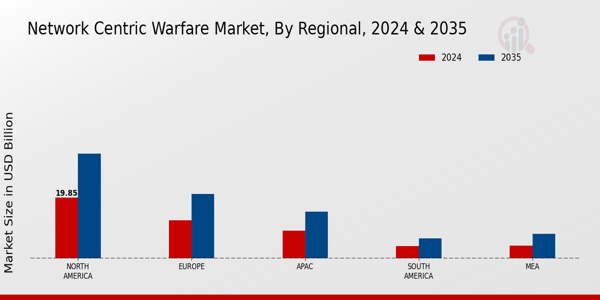The Global Network Centric Warfare Market has gained significant traction due to the increasing emphasis on interoperability and information sharing among military platforms and forces.
This market is characterized by a competitive landscape where various players strive to leverage advanced technologies, such as artificial intelligence, machine learning, and big data analytics, to enhance decision-making capabilities and operational effectiveness.
The integration of networked systems has paved the way for a more cohesive approach to combat operations, driving the demand for sophisticated solutions that enable seamless communication and real-time situational awareness on the battlefield.
As defense budgets grow across numerous countries, this market is expected to witness further expansion, resulting in a race among industry players to innovate and deliver state-of-the-art network-centric solutions.
Leonardo stands as a formidable competitor within the Global Network Centric Warfare Market, showcasing a distinct portfolio of capabilities aligned with modern defense needs. This company's strengths lie in its robust research and development initiatives, which enable it to stay at the forefront of technology trends and offer cutting-edge network-centric warfare solutions.
Leonardo's emphasis on integrated systems and its ability to provide comprehensive solutions that encompass sensors, communication systems, and decision-support tools make it a vital player in this space.
The firm’s commitment to fostering partnerships and collaborations further enhances its market presence, enabling it to deliver tailored solutions that address the unique requirements of various military stakeholders.
Leonardo's focus on operational flexibility, combined with a strong presence in the European and North American defense sectors, solidifies its competitive position in the Global Network Centric Warfare Market.
SAIC also plays a crucial role in the Global Network Centric Warfare Market, with a focus on integrating advanced technological solutions to support military operations. The company's strengths lie in its deep understanding of defense and intelligence needs, allowing it to create tailored solutions that enhance situational awareness and increase operational effectiveness for military customers.
SAIC's expertise in cloud computing, cybersecurity, and data analytics positions it favorably to deliver innovative network-centric warfare offerings that can adapt to rapidly changing battlefield environments. The firm has cultivated a reputation for robust program management capabilities, enabling it to execute large-scale defense contracts effectively.
By leveraging strategic partnerships and aligning its offerings with the latest technological advancements, SAIC ensures that it remains a competitive force in the Global Network Centric Warfare Market, catering to the evolving demands of military organizations globally.


















Leave a Comment